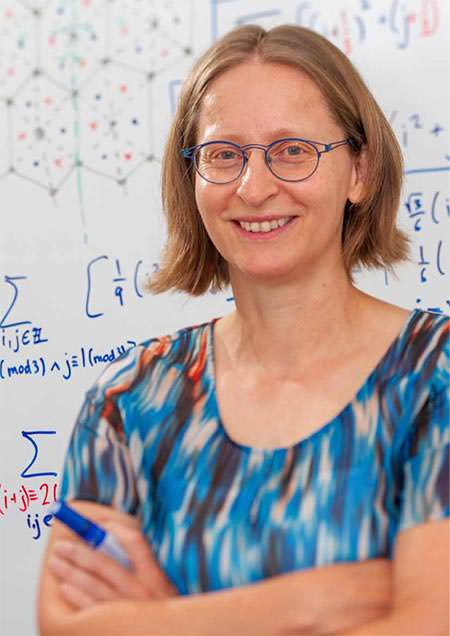Virtual materials - Annual Report 2018
8 April, 2019

MacDiarmid Institute researchers use computers to reproduce conditions unachievable in a lab, such as the magnetic forces inside a white dwarf star.
Some of New Zealand’s most innovative material science doesn’t happen on a lab bench or in a fume hood, but in the circuit boards and hard drives of university computers across the country. Materials modelling is a rapidly expanding area of research, and here at the MacDiarmid Institute we’re lucky enough to count some of the sector’s leading scientists among our ranks. The materials modelling community is in itself a diverse field, but like our experimental work, our computational research has a distinctly interdisciplinary flavour. It touches on topics as diverse as fundamental physics, energy, bioscience, chemistry and industrial applications.
The one thing that unifies all of these fields is a desire to understand why materials behave in the way they do. This has always been the role of materials modelling and theory, but in recent years, enabled largely by ever-improving hardware and computational techniques, we’ve seen many more examples of ‘theory first, experiment second’. And this trend shows no sign of slowing down.
Occasionally, modelling is the only way to answer a materials question – where an experiment is either impossible or too dangerous to carry out. This is an area that Associate Investigator and Massey University Senior Lecturer, Dr Elke Pahl, is interested in. Through her computational techniques, she can virtually reproduce conditions that are simply unachievable in a lab, such as extreme magnetic fields and pressures more typical of the inside of a white dwarf star. Her work on analytic formulae for cohesive energy calculations provides new insight into solids. She also recently co-authored a paper that quantified the melting temperature of the element radon. Dr Pahl says, “Our work validated the only experimental result that exists, and that was from the beginning of last century. Radon’s radioactive properties means that nobody wants to measure it in a lab anymore.”
In addition to filling significant experimental gaps, computational tools are increasingly being used to speed up, and steer, the materials discovery process. In order to design a new material with a specific set of properties, an experimentalist would need to take an iterative approach. Synthesising and characterising compounds in a lab in this way can be slow and very expensive. But with high-performance computing tools, materials can be made – and even measured – virtually.
Much of this work has practical applications, too. Take Associate Investigator Dr Anna Garden, for example. Along with her group at the University of Otago, she’s trying to develop new catalysts that will make industrial processes such as ammonia synthesis more sustainable. She’s also investigating catalysts that could tackle New Zealand’s nitrate problem, by selectively converting the water pollutant into harmless nitrogen gas. For Dr Garden, as well as solving particular problems, this work allows her to develop new methods and test their predictive power. “If we can develop methodology that reliably reproduces observed behaviour for known systems,” she explains, “then we can start to make quantitative predictions of new and exciting materials that are yet to be synthesised.”
This sentiment is echoed by Postdoctoral Fellow, Dr Krista Steenbergen, who first joined the MacDiarmid Institute as a PhD student. For her, “theory is a tool for explanation, not reproduction,” and high performance computing’s strength lies in the fact that it can drive experiments and technology developments. In her work at Victoria University of Wellington, she explores low- dimensional materials, which tend to display very different behaviours from the bulk material. Explaining why this might be the case is a complex computational query, and is one that, for many material classes, remains unanswered. “My research focuses on how material properties change as their dimensions shrink,” Dr Steenbergen says. “So one question might be, what happens to the properties of gallium as you reduce the bulk material down to a 2D-surface or nanoparticle?”
MacDiarmid Institute Co-Director, Associate Professor Nicola Gaston, is also interested in the mysterious behaviour and structure of nanoparticles. Her research focuses on a particular class of particles known as superatoms. While she describes her work at the University of Auckland as “mostly a long way from application,” it plays a key role in understanding how complex materials form. She explains; “Self-assembly processes are how nature makes materials, so we’re trying to understand those processes via modelling.” That could lead to materials design at an entirely new scale.
For these researchers, the future of materials will be led by modelling, but accurately and reliably describing complex materials remains a big question. As Dr Gaston describes; “Conceptually, we break down macroscopic materials into their constituent building blocks, and model their various interactions separately; we look at structure, properties, and environmental interactions in separate steps. We are getting closer to being able to put all these things together in order to predict the properties of novel materials – and that is exciting.”


